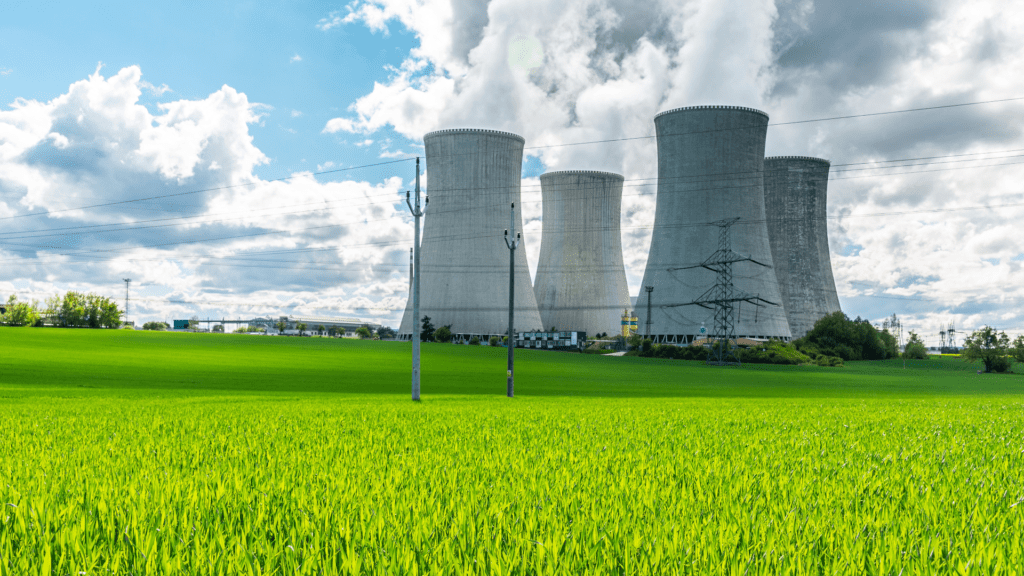Fixing the Energy Crisis by adopting Bluegen Fuel Cells.
It would seem that Australia has completely overlooked a very promising technology with their energy mix and the it can be provided by Australian Households.
Australia is currently facing an energy crisis, with concerns over the country’s ability to meet its growing energy demands.
The rapid transition to solar and wind turbine power, coupled with the closure of coal-fired power stations, has created a challenging situation that requires careful consideration and planning.
While the move towards renewable energy sources is commendable, it is essential to address the potential drawbacks and explore alternative solutions to provide a smoother transition.
The Unintended Consequences of Rapid Transition.
The rapid transition to solar and wind power has presented some unforeseen challenges.
While these renewable energy sources have their benefits, such as reducing greenhouse gas emissions and promoting sustainability, they are not without their limitations.
One of the significant challenges is the intermittent nature of these energy sources. Solar power generation is dependent on sunlight, and wind power generation relies on consistent wind patterns.
This intermittency can lead to fluctuations in energy supply, which can be problematic during peak demand periods.
Additionally, the closure of coal-fired power stations without considering the latest Ultra Super Critical Technology for Coal Fired Power Plants has contributed to the energy crisis.
These advanced technologies can significantly reduce emissions and increase the efficiency of coal-fired power plants.
By neglecting to explore these options, Australia may have missed an opportunity to bridge the gap between traditional fossil fuels and cleaner energy sources.
The Role of Natural Gas and Nuclear Power.
Another factor contributing to the energy crisis is the apparent aversion to burning 98% pure methane gas to produce power. Natural gas is a cleaner alternative to coal and can serve as a bridge fuel during the transition to renewable energy sources.
It emits significantly fewer greenhouse gases and pollutants compared to coal, making it a viable option for reducing emissions while maintaining a reliable energy supply.
Furthermore, Australia’s ongoing allergy to nuclear power has limited the country’s ability to diversify its energy mix.
Nuclear power is a reliable and low-emission source of energy, capable of providing a consistent baseload supply.
With proper regulations and safety measures in place, nuclear power can be a valuable addition to Australia’s energy portfolio, helping to meet the increasing demand while reducing reliance on fossil fuels.
Addressing the Energy Crisis Needs A Balanced Approach.
It is crucial for Australia to adopt a balanced approach to address the energy crisis.
While renewable energy sources are essential for a sustainable future, it is essential to consider the limitations and explore alternative options.
The following strategies can help mitigate the challenges and ensure a stable and reliable energy supply:
No.1 – Investment in Energy Storage Technologies.
To address the intermittent nature of solar and wind power, Australia is investing in energy storage technologies.
Battery storage systems currently use liquid state lithium-ion batteries. Sure, they can store excess energy during times of low demand and release it during peak periods however, this option is not without its own problems though.
Lithium-ion batteries contain highly flammable electrolytes, which can ignite if exposed to high temperatures or damaged in any way.
In large scale storage systems, the sheer number of batteries increases the likelihood of a fire occurring.
Additionally, the close proximity of the batteries can also lead to a domino effect, where one battery catching fire can trigger a chain reaction.
Preventing Fires in Large Scale Battery Storage Systems.
While the risk of fires in liquid state lithium-ion batteries cannot be completely eliminated, there are several measures that can be taken to minimize the chances of such incidents:
a) Thermal Management: Implementing effective cooling systems can help regulate the temperature of the batteries and prevent overheating.
b) Fire Suppression Systems: Installing fire suppression systems, such as sprinklers or foam-based extinguishers, can help contain and extinguish fires before they spread.
c) Monitoring and Maintenance: Regularly inspecting the batteries for signs of damage or deterioration, and promptly replacing any faulty units, can significantly reduce the risk of fires.
It is also important for operators of large scale battery storage systems to have comprehensive emergency response plans in place.
These plans should include protocols for evacuating personnel, notifying emergency services, and minimizing the impact of a fire on surrounding areas.
While liquid state lithium-ion batteries offer numerous advantages in terms of energy storage, it is essential to acknowledge the potential risks they pose.
By implementing proper safety measures and protocols, we can harness the benefits of this technology while mitigating the dangers associated with fires in large scale storage systems.
Battery storage systems will be a far better option once solid state batteries are available for use.
No.2 – Integration of Natural Gas Power Plants.
Integrating natural gas power plants into the energy mix can provide a reliable and cleaner source of energy.
By utilizing advanced gas turbine technology, Australia can reduce emissions while maintaining a stable energy supply.
This approach can serve as a transition strategy until renewable energy sources become more reliable and cost-effective.
No.3 – Reconsideration of Nuclear Power.
Australia should reconsider its stance on nuclear power and engage in a comprehensive dialogue about its potential benefits and drawbacks.
By conducting thorough research, addressing safety concerns, and implementing robust regulations, nuclear power can be a viable option to diversify the energy mix and reduce reliance on fossil fuels.
No.4 – Roll out a program for installing Bluegen Fuel Cells at Australian Homes.
The Rise of Bluegen Fuel Cells has been truly impressive. Energy is a vital component of our lives. We need to look at cleaner and more sustainable sources of energy.
Just like what we have done with millions of Australian homes with solar power systems.
Innovative technologies like Bluegen fuel cells are gaining traction around the world and each home in Australia that has solar could provide energy to the grid 24hours a day with these units.
What are Bluegen Fuel Cells?
Bluegen fuel cells are a cutting-edge technology that generate electricity through an electrochemical process. These fuel cells use gas as a fuel source, converting it into electricity and heat with high efficiency.
Bluegen fuel cells are a type of solid oxide fuel cell (SOFC) technology that can generate electricity and heat from natural gas, synthetic gas or biogas. Bluegen fuel cells offer a cleaner and more efficient way to produce energy.
Bluegen fuel cells have an impressive energy conversion efficiency of up to 60%. This means that a significant portion of the fuel’s energy is converted into usable electricity, minimizing waste and reducing overall energy consumption.
Bluegen fuel cells have been making waves in the energy industry, with several recent developments showcasing their potential:
As homeowners increasingly seek sustainable energy solutions, Bluegen fuel cells are gaining popularity for residential applications.
These fuel cells can power homes while simultaneously providing heat, resulting in lower energy bills and reduced reliance on the grid.
As we strive to transition to a cleaner and more sustainable energy system, Bluegen fuel cells offer a promising solution.
With their high energy efficiency, reduced environmental impact, and versatility, Bluegen fuel cells are at the forefront of the energy revolution.
Bluegen fuel cells can provide a reliable source of power for those people wishing to live off the electricity grid. Forget about ridiculously high power bills and having worry about blackouts or grid failures.
Australia, with its abundant natural gas resources, is well-positioned to benefit from the adoption of Bluegen fuel cells.
By embracing this technology, Australia will need to work out a way to lower gas prices though.
This is an area where the state and federal governments could make a real difference and help fix Australia’s energy woes.
Government Support and Incentives.
The Australian government can play a crucial role in promoting the adoption of Bluegen fuel cells by offering financial incentives and support programs. These incentives can include grants, tax credits, and subsidies for homes and businesses that invest in this clean energy technology.
Research and Development.
Investing in research and development (R&D) is essential to further improve the efficiency and affordability of Bluegen fuel cells.
By supporting R&D initiatives, Australia can drive innovation and make significant advancements in this technology, making it more accessible to the general public.
Collaborations and Partnerships.
Australia can foster collaborations and partnerships between government agencies, research institutions, and industry players to accelerate the deployment of Bluegen fuel cells.
By working together, these stakeholders can share knowledge, resources, and expertise to overcome any barriers and ensure a smooth transition to this sustainable energy solution.
Public Awareness and Education.
Increasing public awareness and education about Bluegen fuel cells is crucial to drive consumer acceptance and demand.
The Australian government and relevant organizations can launch public campaigns, conduct workshops and provide educational materials to inform the public about the benefits and potential of this technology.
Where to from here?.
Bluegen fuel cells offer a promising solution to reduce our carbon footprint in Australia.
With their high efficiency, reliability, and reduced emissions, these fuel cells can provide a clean and sustainable source of power for our homes and businesses.
By implementing government support, investing in research and development, fostering collaborations and raising public awareness, Australia can pave the way for a future powered by Bluegen fuel cells.
The current rapid transition to solar and wind power in Australia has contributed to the energy crisis but all is not lost.
It is essential to approach Australia’s energy issue with a far more balanced perspective.
By addressing the challenges associated with renewable energy sources, exploring advanced coal-fired power plant technologies, considering natural gas as a bridge fuel, and engaging in a constructive conversation about nuclear power, Australia can overcome its energy crisis and pave the way for a sustainable and reliable energy future.








